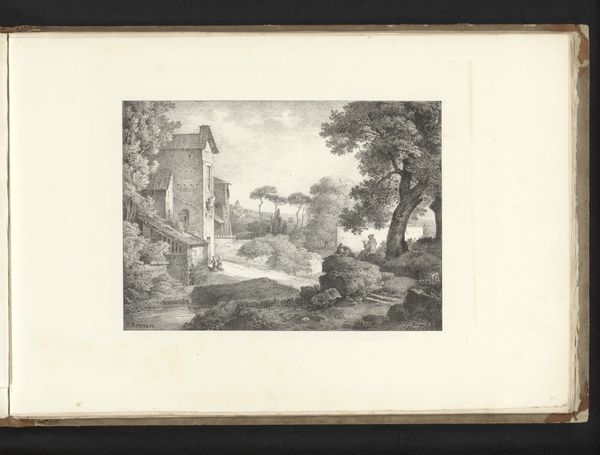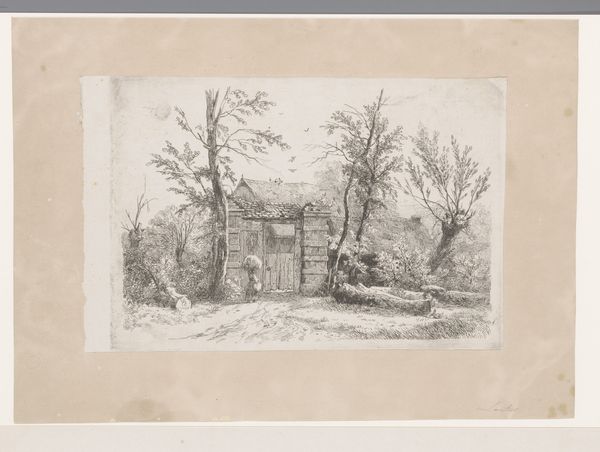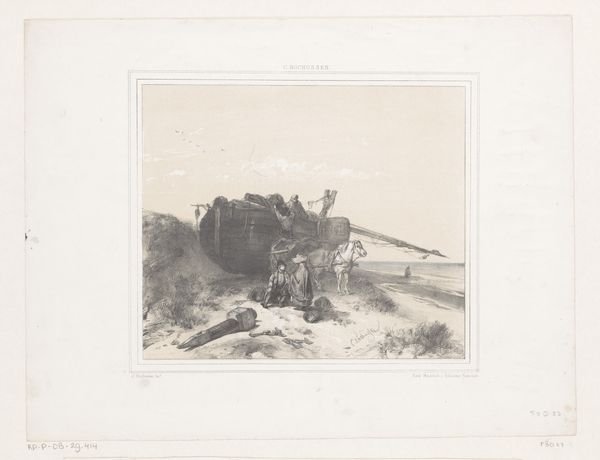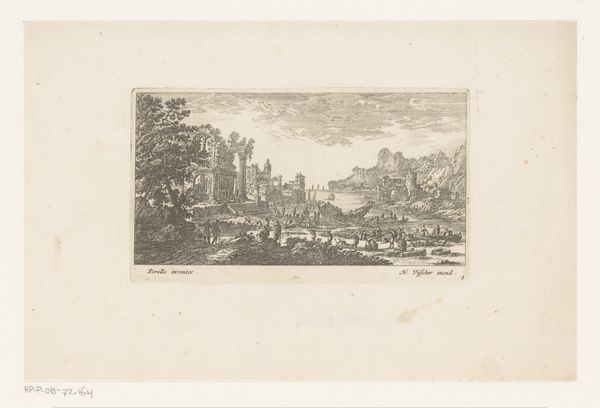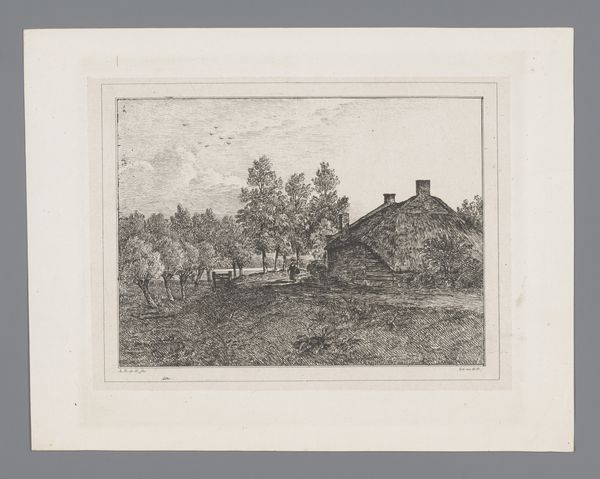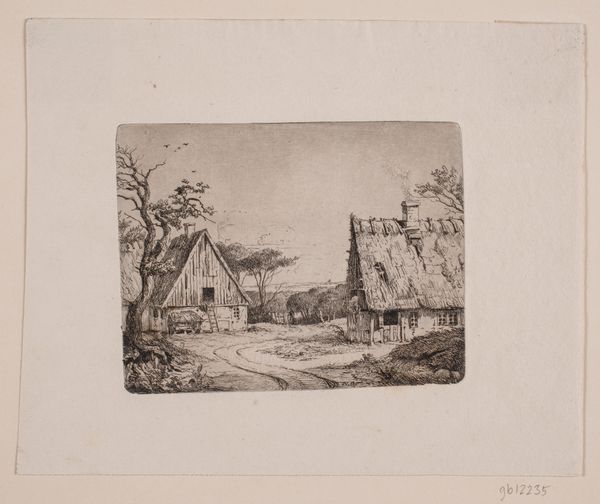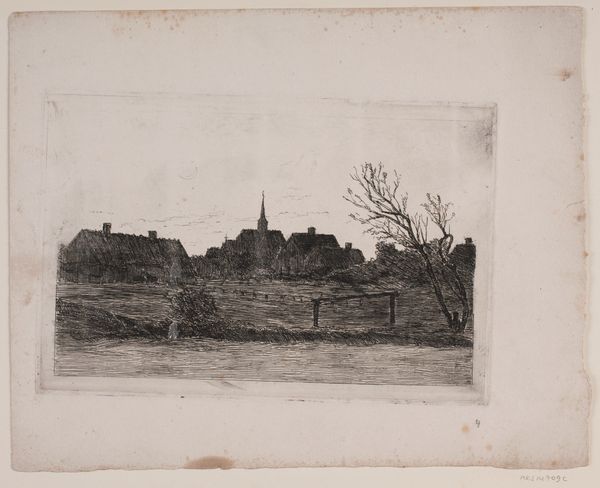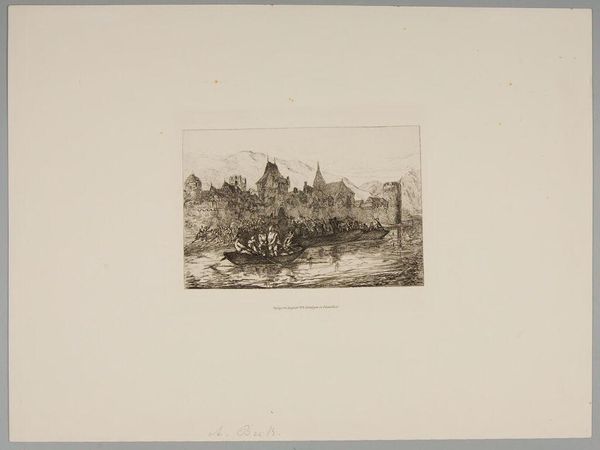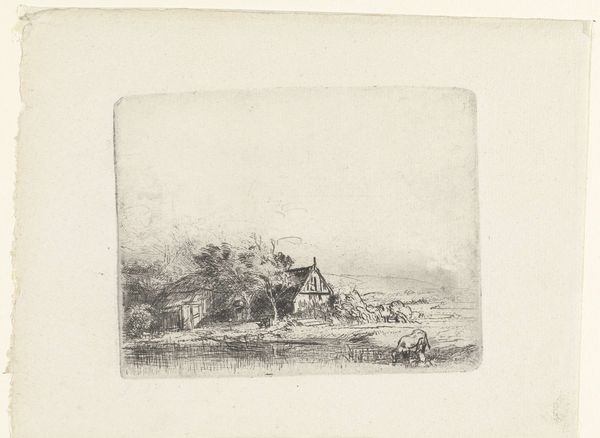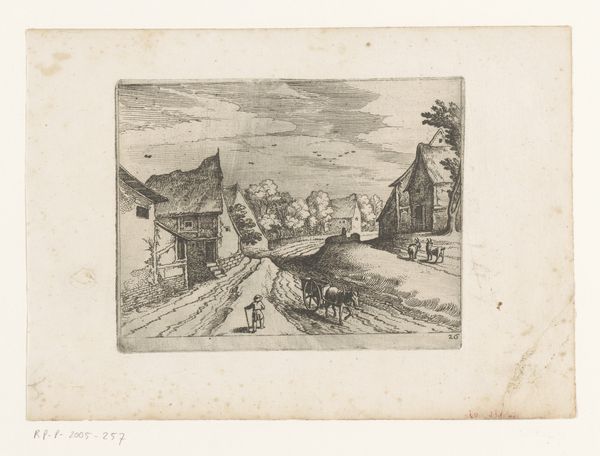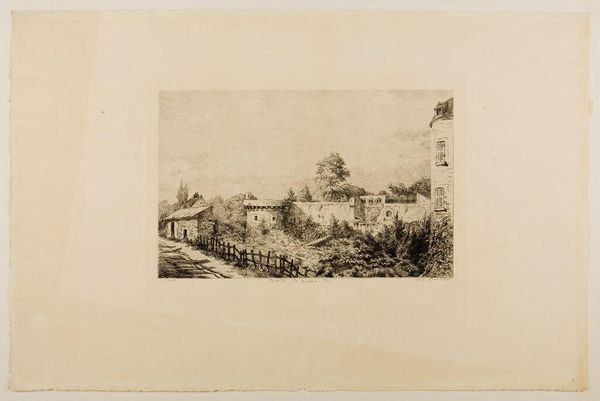
#
natural shape and form
#
water colours
#
natural tone
#
rough brush stroke
#
possibly oil pastel
#
underpainting
#
watercolour bleed
#
tonal art
#
mixed medium
#
watercolor
Dimensions: height 125 mm, width 215 mm
Copyright: Rijks Museum: Open Domain
Editor: Here we have "Landschap met watermolen," a landscape with a watermill by Willem Steelink. The artwork has a date range of 1836 to 1913 and looks to be created with watercolors. It's very muted and gives me a nostalgic feeling, almost like looking at a faded photograph. What strikes you about this piece? Curator: Well, looking at this idyllic scene, it's tempting to simply appreciate the picturesque quality. However, I think we need to dig a bit deeper. Landscapes, especially those depicting rural life, often served as powerful tools for constructing national identity. Consider when this piece might have been made – the 19th century was a time of intense nation-building and romanticising of the past. Editor: So, you're suggesting that what seems like a simple landscape could be subtly promoting certain values or ideals? Curator: Exactly! Think about who is absent from the picture as much as who is present. Where are the signs of industrialisation? Where are the working classes who truly powered these mills? By focusing on an imagined harmonious past, such images often obscured social inequalities. Editor: That's a great point. I hadn't considered the potential political undertones. Does the technique – the watercolors, the muted tones – contribute to this? Curator: Absolutely. The soft, almost dreamlike quality evokes a sense of longing for a simpler time. Watercolors themselves were often seen as a more "feminine" medium. In what ways might gendering of medium relate to societal expectations? How does that connect to notions of a more peaceful, domestic ideal compared to the realities of the industrial age? Editor: That’s fascinating! So, instead of just a pretty picture, it's actually a complex statement about identity, power, and maybe even gender. It certainly changes how I see the artwork now. Thank you for illuminating those hidden layers! Curator: It's a constant process of re-evaluating and understanding art within its multifaceted contexts. The beauty, after all, is just the surface!
Comments
No comments
Be the first to comment and join the conversation on the ultimate creative platform.
